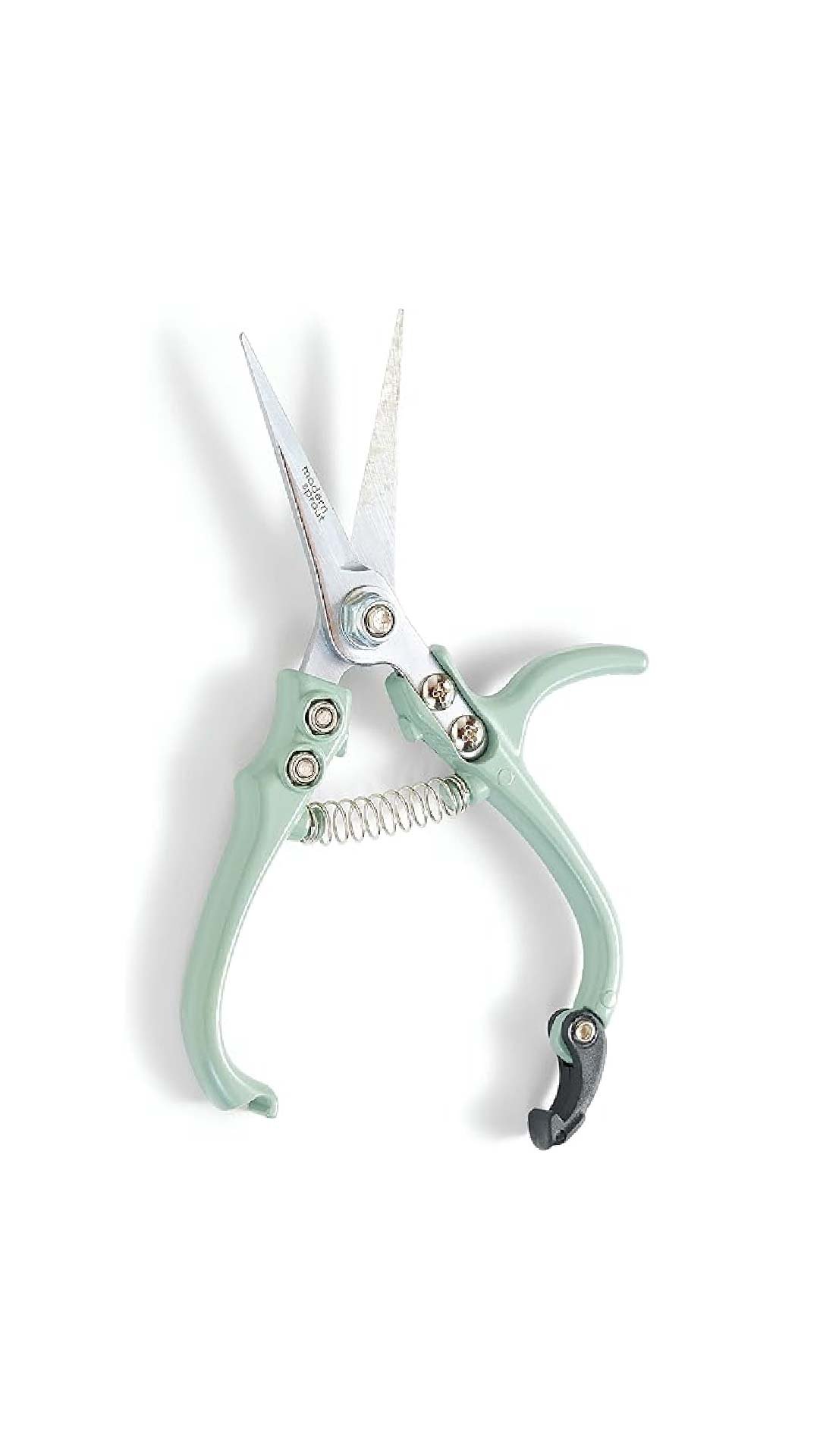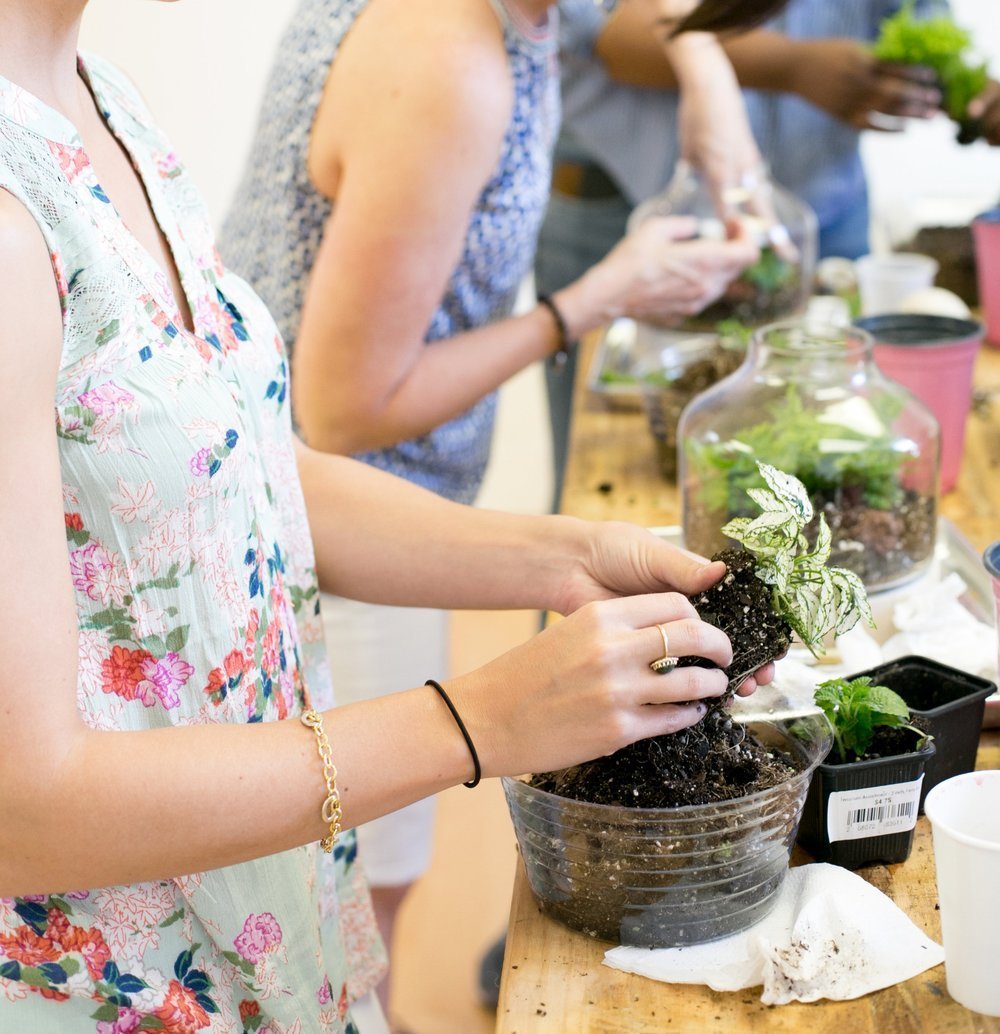Plant Tip Tuesday: How to Propagate Plants
Propagating plants is a great way to save money on gardening, and it's also a fun and rewarding way to grow new plants. There are many different ways to propagate plants, but some of the most common methods ( the ones we’ll be going over) include:
Stem cuttings
Leaf cuttings
Division
Air layering
Let’s get started:)
Stem Cuttings
Stem cuttings are one of the easiest ways to propagate plants. To take a stem cutting, simply cut a healthy stem from the mother plant, making sure to include a node (the point where a leaf meets the stem). Remove the lower leaves from the stem, and then dip the end of the stem in rooting hormone.
Rooting hormone is a chemical that helps to stimulate root growth. It is available in liquid or powder form, and can be purchased at most garden centers.
Once the stem cutting has been dipped in rooting hormone, place it in a pot filled with moist potting mix. Keep the potting mix moist, but not soggy. The stem cutting should start to root within a few weeks.When the roots have formed, you can transplant the new plant into a larger pot.
Here are some tips for taking stem cuttings:
Choose a healthy stem from the mother plant. The stem should be free of disease or pests, and it should be firm and green.
Make a clean cut with a sharp knife or scissors. The cut should be made just below a node.
Remove the lower leaves from the stem. This will help to reduce the amount of moisture that is lost from the cutting.
Dip the end of the stem in rooting hormone. This will help to stimulate root growth.
Place the stem cutting in a pot filled with moist potting mix. The potting mix should be well-draining, so that the roots do not become soggy.
Keep the potting mix moist, but not soggy. The stem cutting will need water to survive, but it should not be overwatered.
The stem cutting should start to root within a few weeks. Once the roots have formed, you can transplant the new plant into a larger pot.
Leaf Cutting
Place the leaf cutting on a pot filled with moist potting mix. Keep the potting mix moist, but not soggy. The leaf cutting should start to grow roots and a new plant within a few weeks.Some plants, such as succulents and African violets, can be propagated from leaf cuttings. To take a leaf cutting, simply remove a healthy leaf from the mother plant. Make sure to cut the leaf cleanly, and avoid tearing it.
Use a sharp knife or pair of scissors to make a clean cut.
Cut the leaf as close to the base as possible, without damaging the stem.
If the leaf is large, you can cut it into smaller pieces.
Place the leaf cutting on a pot filled with moist potting mix. Keep the potting mix moist, but not soggy. The leaf cutting should start to grow roots and a new plant within a few weeks.
Use a pot that is slightly larger than the leaf cutting.
Fill the pot with a well-draining potting mix.
Water the potting mix until it is moist, but not soggy.
Place the leaf cutting on top of the potting mix, and gently press it down so that it is in contact with the soil.
Cover the pot with a plastic bag to create a humid environment.
Place the pot in a warm, sunny spot.
(Once the leaf cutting has started to grow roots, you can remove the plastic bag).
Continue to water the leaf cutting regularly, and fertilize it once a month.
Once the new plant is established, you can transplant it into a larger pot.
Division
Some plants, such as daylilies and hostas, can be propagated by division. To divide a plant, simply dig up the entire plant and carefully separate the roots into two or more sections. Each section should have a healthy root system and at least one growing point .Replant the divided plants in separate pots. Water the plants well, and keep them in a shady location for a few weeks. Once the plants have established themselves, you can move them to a sunnier location.
Dig up the plant. Use a garden fork or shovel to carefully dig up the entire plant. Be sure to loosen the soil around the roots so that you can easily remove the plant from the ground.
Separate the roots. Once the plant is out of the ground, carefully separate the roots into two or more sections. Use your fingers or a sharp knife to gently tease apart the roots. Be careful not to damage the roots.
Replant the divided plants. Once the roots are separated, replant each section in a separate pot. Use a well-draining potting mix and water the plants thoroughly.
Place the pots in a shady location. Keep the pots in a shady location for a few weeks. This will help the plants to recover from being divided and to start growing new roots.
Move the plants to a sunnier location. Once the plants have established new roots, you can move them to a sunnier location. Be sure to gradually increase the amount of sunlight that the plants receive over time.
Division Tips:
Choose a healthy plant to divide. The plant should be free of pests and diseases, and it should have a strong root system.
Divide the plant in early spring or fall. This is when the plant is less likely to be stressed by being divided.
Use a sharp knife or garden shears to divide the plant. Be careful not to damage the roots.
Replant the divided plants in pots or in the ground. Water the plants thoroughly and place them in a shady location.
Once the plants have established new roots, you can move them to a sunnier location.
Air Layering
Air layering is a method of propagating plants that involves creating a new root system on a stem without cutting it from the mother plant. To air layer a plant, simply make a cut in the stem, just below a node. Insert a piece of sphagnum moss into the cut, and then wrap the stem with plastic wrap.
Secure the plastic wrap with a rubber band, and then mist the moss regularly to keep it moist. The stem should start to develop roots within a few weeks. Once the roots have formed, you can cut the new plant from the mother plant and transplant it into a pot.Air layering is a simple and effective way to propagate many types of plants, including trees, shrubs, and vines. It is a good choice for plants that are difficult to root from cuttings, such as succulents and cacti.
To air layer a plant, you will need:
A sharp knife or razor blade
A piece of sphagnum moss
A plastic bag or wrap
A rubber band
Ready to try it?
-Choose a healthy stem on the plant that is about 1/2 to 1 inch thick.
-Make a clean cut in the stem, just below a node.
-Insert a piece of sphagnum moss into the cut.
-Wrap the stem with plastic wrap, making sure to seal the edges tightly.
-Secure the plastic wrap with a rubber band.
-Mist the moss regularly to keep it moist.
-The stem should start to develop roots within a few weeks.
Once the roots have formed, you can cut the new plant from the mother plant and transplant it into a pot.
Here are some tips for successful air layering:
Choose a stem that is not too young or too old.
Make the cut cleanly and at a slight angle.
Pack the sphagnum moss tightly around the stem.
Seal the plastic wrap tightly to prevent moisture from escaping.
Mist the moss regularly to keep it moist.
Be patient! It may take a few weeks for the roots to form
General Propagation Tips
Use sharp, clean tools when taking cuttings.
Remove any leaves from the bottom of the stem cutting.
Dip the end of the stem cutting in rooting hormone.
Keep the potting mix moist, but not soggy.
Place the plant in a warm, sunny location.
Be patient! It can take a few weeks for the plant to root.
Stick to these few tips and you’ll b e a propagation pro in no time. Remember, patience is key. Keep trying your hand at propagating, read more about it, or even watch tutorials online. Need more help or wanna show us plants you have propagated? Shoot us an email at hello@thezensucculent.com!






